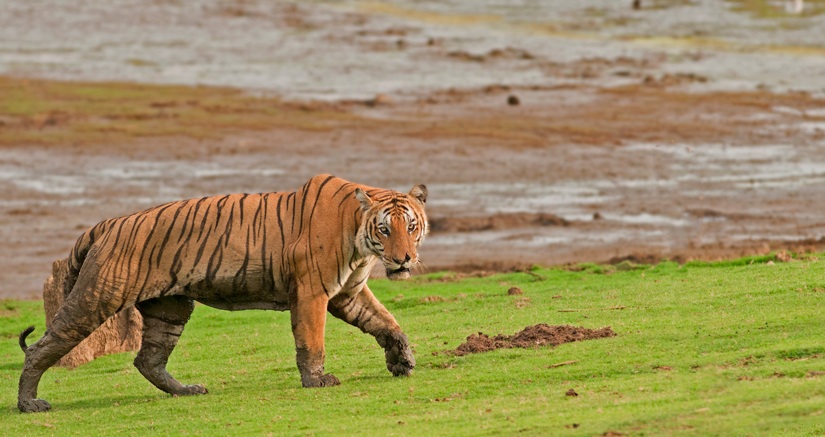The very mention of the word ‘TIGER’ and one would associate it with the yellow ochre and black stripped majestic and powerful animal on the prowl and of course the most photographed in the animal kingdom. How close or far are we from associating this TIGER’ instead as a mere character in Ruskin Bond’s short stories or Rudyard Kipling’s Jungle Book or with products/brands like tiger balm, tiger airways, tiger beer etc?
The recent SC ruling on banning tourism in core areas of tiger reserves has created quite a furore in the last one week amongst conversationalists, tourists and people in hospitality industry. This judgement has raised a few key questions.
1) Is the high tourism density in these core areas the real reason for dwindling population of tigers?
2) Should people be denied the right to watch this majestic animal in its natural habitat?
Everybody across the board would unanimously agree that tourism density in tiger reserve areas and earnings from tiger tourism have been on the rise. Kanha National park alone saw a 60 per cent increase in the number of tourists between 2006 and 2010.
A high tourist inflow also saw a cavalcade of four wheelers pouring in at small tiger reserve villages, safari jeeps jostling for space at forest entry gates, damaging unpaved forest tracks, littering of watering holes and grass lands with non-biodegradable waste and mounting garbage piles from forest guest houses & resorts. While these activities on one hand have disturbed the animal in its natural habitat and have upset the fragile ecosystem; the real reason for the dwindling numbers are the notorious poachers.
There are groups of conservationists who believe that tourists play an informal role in monitoring tiger reserves and in the absence of tiger-tourism, poachers will ply their trade unhindered. The group – TOFT (Travel operators for Tigers) further supplements this argument quoting the NTCA Tiger census statistics published in March 2011. The census survey indicates that tiger numbers have increased in all tiger reserve parks that have also seen a substantial rise in tourist density. But at the same time, unseen and lesser-known sanctuaries and forest corridors have lost most or all of their tigers and wildlife to poaching, neglect and extractive pressures.
The counter argument cited by certain other conservationists is that poachers carry out their trade in the dark and informal ‘monitoring’ by tourists isn’t of any use. If forest officials haven’t been able to curtail poaching in the last four decades the absence of tourists wouldn’t change the scenario. Secondly, if “informal patrolling” keeps poachers away, then it should be actively carried out in the buffer areas that are usually the gateway to core areas.
The other argument that has been doing the rounds in debates and discussions in forums amongst conservationists is that the tourism ban will affect local tribes and their livelihood and the absence of livelihood would only propel them further to take to poaching. They say that the tourism industry has offered locals jobs which no other industry or government has.
However NGOs and few conservationists working on ground beg to differ. They say that tiger tourism having provided alternate livelihoods and better standard of living to the locals is only a myth. Locals aren’t involved in decision-making or conservation efforts. They are in fact offered menial jobs at resorts and work in deplorable conditions for a meagre salary.
On the second aspect – nature enthusiasts being unjustifiably stripped of the opportunity of seeing animals in their natural habitat – the tourism ban does indeed go against the objective of ‘Project Tiger’. To quote “The main objective of Project Tiger is to ensure a viable population of tiger in India for scientific, economic, aesthetic, cultural and ecological values and to preserve for all time, areas of biological importance as a natural heritage for the benefit, education and enjoyment of the people.”
Environmentalists believe that educated and informed citizens can form a strong lobby for conservation and saving the national animal that is on its last leg. Their plea is that, ‘If present and future generations are deprived of park visits, how are they expected to understand the importance of conservation?’
On a closing note, instead of a complete ban on all forms of tourism in tiger reserve areas, we feel the government must instead regulate tourism activities.
1) Have forest reserves clearly demarcate core and buffer areas.
2) Restrict entry of the number of safari vehicles into reserve areas. Like in the case of Nagarhole Reserve forest where only 2 trips for 2 hrs are conducted each day with a capacity of only 12 passengers in each trip.
3) Levy a huge penalty on tourists who litter reserve forest areas.
4) Speed-up the development of wildlife corridors between Tiger Reserves to enable movement of wildlife from one reserve to another. This would also ensure fewer instances of man-tiger conflict.
The SC ban will remain in force until the court finally disposes the PIL. The SC will give its final ruling on Aug 22, 2012. For more updates on tiger tourism watch this blog space!
Has the SC’s recent announcement on banning tiger safaris in national parks dampened your spirits? Do you favour the SC judgement on banning tourism in tiger reserves?Let us know your thoughts.


